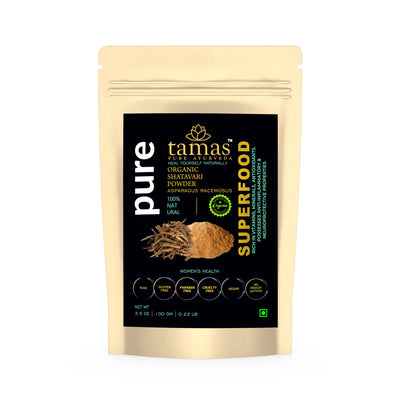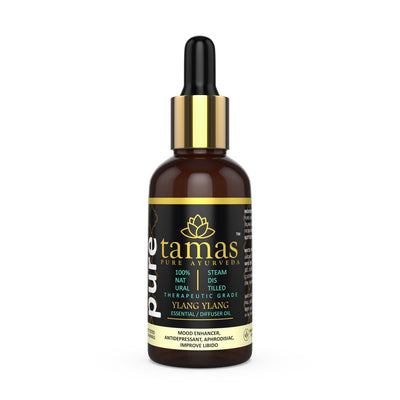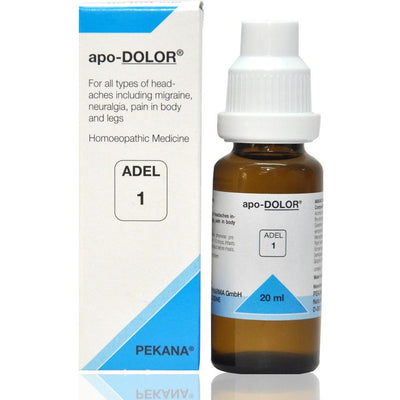
Ksheerabala Thailam
For Neuromuscular Disorders
KsheerabalaThailam is an Ayurvedic oil formulation that is used for external Panchakarma treatments. Ksheerabala Thailam massage oil is used in Ayurvedic therapies to help with the Vata imbalance caused by neuromuscular disorders. It has anti-inflammatory, analgesic, and anti-rheumatic properties. The Ksheerabala Thailam is also known to contain potent ingredients that are beneficial in relieving the inflammation and pain caused by sciatica, arthritis, myalgia, and spondylosis. It helps manage pain in neuralgia and other such disorders. The word Ksheera refers to cow’s milk. Bala is the herb SidaCordifolia. The oil base used in this formulation is Sesame oil which is the most preferred oil for Panchakarma treatments. Ksheerabala Thailam uses a combination of these potent ingredients as part of Ayurvedic therapies for neuromuscular problems. The use of Ksheerabala Thailam helps in Panchakarma external treatments for such issues.
Every day we go about our daily activities and pay very little attention to how our body moves. Our body performs not only the normal functions of standing, sitting and walking but also fine motor activities. The process by which this is achieved is through the proper functioning of the neuromuscular system. When this system is affected it reduces the mobility of a person. Degenerative diseases of the neuromuscular system can seriously impact one’s ability to go about daily activities. They can be present at birth or be gradually degenerative.
Ingredients
Bala - Kwath (Sida cordifolia)
Bala - Kalka (Sida cordifolia)
A Kalka is a herbal paste of a herb. Bala Kalka is a paste that is made by mixing Bala root powder with water
Thilathaila (Sesamumindicum)
Ksheera (Cow’s milk)
Ayurveda And Neuromuscular Disorders
Ayurveda describes three Doshas that govern the body; Vata, Pitta, and Kapha. The three Doshas govern different aspects of the body’s functioning. In the Ayurvedic system, Vata is Prana or the life force that controls movement. This Prana is controlled by the central nervous system but is located in the Kati (lumbosacral) region of the body. Ayurveda recognises that while some neuromuscular disorders are present at birth others are gradually degenerative. Ayurveda considers both the types as Vata disorders or VataVyadhi. When the Vata dosha is aggravated it causes these problems. This aggravated VataDosha affects the weak part of the body resulting in a neuromuscular disorder. This can cause either rigidity or weakness in that part. A person who has a Vata imbalance should take care to avoid foods that aggravate the Dosha.
Ayurveda approaches health in a holistic manner. So, in order to treat a particular problem, the whole body must be restored to good health. Maintaining the Dosha balance is one facet of this approach. Ayurveda also places great importance on the process of digestion. When one has digestion that is not performing properly, the food does not get properly digested. This obviously means that the nutrients in the food are not properly absorbed by the body. It also creates a metabolic waste called Ama that is one of the root causes of diseases.
The treatment of these disorders in the Ayurvedic system of medicine is multi-faceted. The prescribed treatments include medicine that is taken internally as well as external treatments called Panchakarma treatments. These Panchakarma treatments include Svedana, Abhyanga, Navarakizhi, Basti, and Patrapinda as required. They help to strengthen the weak parts of the body by pacifying the Vata dosha. Some of these treatments are also to remove the Ama that is formed and collected in the body. It is recommended that these treatments be supplemented with Yoga Asanas, lifestyle changes, and proper diet to further strengthen the body. There are also herbal formulations that are recommended by Ayurveda to strengthen the nerves and muscles. Long term Ayurvedic treatment of neuromuscular disorders aims at slowing down the progression of these diseases while improving mobility.
Dietary advice is aimed at stopping the formation of Ama in the body. Eating food that is freshly made, nutritious, and well balanced is good for health. In addition to this, the food that is eaten should not aggravate the Vata Dosha further. The functioning of the digestion is further aided with the use of herbs and foods that strengthen the digestive fire Agni and enhance the proper functioning of the digestive system. One should also aim to eat the largest or heaviest meal at noon when the body’s digestive fire Agni is at its peak. Having a lifestyle that is active aids in maintaining circulation which helps the nutrients nourish all the tissues in the body. An active lifestyle also aids in maintaining a healthy weight which reduces the stress on the joints. When Ama is relieved it is thought to reduce the toxicity that has penetrated the tissues of the body. This is the approach in which Ayurveda addresses autoimmune and degenerative diseases.
The Neuromuscular System - An Overview
As the name indicates, the neuromuscular system comprises all the nerves and muscles in our body. They work in perfect synchronicity as the neuromuscular system. While our muscles help move the body parts, the brain sends it the signals to move through the nervous system. The actual mechanics of being able to move involves both the muscles and the skeletal system. Both have to work in tandem in order for a movement to be trouble-free. Even the involuntary function of breathing is controlled by the neuromuscular system. Our every action and movement from speaking, swallowing, smiling, and walking is dependent on the neuromuscular system.
The main part of the central nervous system which is the brain communicates with the rest of the body through the spinal cord. The spinal cord then links with the peripheral nervous system. The peripheral nervous system has nerves made up of neurons. These neurons have tails called axons by which they are interlinked. When the person decides to move, the brain sends a message which is communicated through the special type of neurons called the motor neurons. The message is first communicated through the upper motor neurons. This is then transmitted to the lower motor neurons and then to the muscles that those particular neurons control. The junction between a neuron branch and muscle is called a presynaptic terminal or a neuromuscular junction. On average, each muscle has a connection to 50 to 200 motor neurons. Some muscles have even more connections. The mechanism of this transmission from nerve to the muscle is via the release of a chemical called acetylcholine at the presynaptic terminals. This is detected by the receptors in the muscle which moves when there is sufficient acetylcholine detected. Any damage to this system of communication can block the signals that trigger movement and cause difficulty in movement or at worst paralysis. The subsequent wasting of the muscles makes the problem worse.
For Neuromuscular Disorders
KsheerabalaThailam is an Ayurvedic oil formulation that is used for external Panchakarma treatments. Ksheerabala Thailam massage oil is used in Ayurvedic therapies to help with the Vata imbalance caused by neuromuscular disorders. It has anti-inflammatory, analgesic, and anti-rheumatic properties. The Ksheerabala Thailam is also known to contain potent ingredients that are beneficial in relieving the inflammation and pain caused by sciatica, arthritis, myalgia, and spondylosis. It helps manage pain in neuralgia and other such disorders. The word Ksheera refers to cow’s milk. Bala is the herb SidaCordifolia. The oil base used in this formulation is Sesame oil which is the most preferred oil for Panchakarma treatments. Ksheerabala Thailam uses a combination of these potent ingredients as part of Ayurvedic therapies for neuromuscular problems. The use of Ksheerabala Thailam helps in Panchakarma external treatments for such issues.
Every day we go about our daily activities and pay very little attention to how our body moves. Our body performs not only the normal functions of standing, sitting and walking but also fine motor activities. The process by which this is achieved is through the proper functioning of the neuromuscular system. When this system is affected it reduces the mobility of a person. Degenerative diseases of the neuromuscular system can seriously impact one’s ability to go about daily activities. They can be present at birth or be gradually degenerative.
Ingredients
Bala - Kwath (Sida cordifolia)
- Bala is also referred to as the Country Mallow
- Kwath is a Kashayam or herbal tea, water extract or decoction form of a herb. It is usually made by combining the herb and water in fixed proportions and then reducing it to a decoction.
- Bala is a herb used in Ayurveda for its antiviral, antirheumatic, diuretic, immunoenhancing, antioxidant, analgesic, antipyretic, hypoglycaemic, hepatoprotective properties
- It is useful in neuromuscular and neurodegenerative disorders owing to its neuroprotective properties. It is beneficial for the nerves, muscles, and joints
- It is a traditional Ayurvedic herb used in the treatment of Vata Dosha disorders
Bala - Kalka (Sida cordifolia)
A Kalka is a herbal paste of a herb. Bala Kalka is a paste that is made by mixing Bala root powder with water
Thilathaila (Sesamumindicum)
- Sesame oil
- In Ayurveda, it is considered to be the prefered oil for all Panchakarma treatments
- It is the best oil for Vata Vyadhi
- It penetrates the skin very easily
- It is used for Abhyanga, ShirodharaNasya, and Basti
- It is used for both external and internal Ayurvedic formulations
- When taken internally it is a good iron supplement
- It is an antioxidant
- It is rich in Vitamin E
- It is found to be rich in alkaloids which are central nervous system stimulants
- It is useful in neuromuscular disorders as well as rheumatism and arthritis
Ksheera (Cow’s milk)
- Milk is a highly regarded ingredient in Ayurvedic medicine
- Pure milk is thought to nourish all the tissues of the body
- It is good for Vata and Pitta
- It helps to balance all the three Doshas
Ayurveda And Neuromuscular Disorders
Ayurveda describes three Doshas that govern the body; Vata, Pitta, and Kapha. The three Doshas govern different aspects of the body’s functioning. In the Ayurvedic system, Vata is Prana or the life force that controls movement. This Prana is controlled by the central nervous system but is located in the Kati (lumbosacral) region of the body. Ayurveda recognises that while some neuromuscular disorders are present at birth others are gradually degenerative. Ayurveda considers both the types as Vata disorders or VataVyadhi. When the Vata dosha is aggravated it causes these problems. This aggravated VataDosha affects the weak part of the body resulting in a neuromuscular disorder. This can cause either rigidity or weakness in that part. A person who has a Vata imbalance should take care to avoid foods that aggravate the Dosha.
Ayurveda approaches health in a holistic manner. So, in order to treat a particular problem, the whole body must be restored to good health. Maintaining the Dosha balance is one facet of this approach. Ayurveda also places great importance on the process of digestion. When one has digestion that is not performing properly, the food does not get properly digested. This obviously means that the nutrients in the food are not properly absorbed by the body. It also creates a metabolic waste called Ama that is one of the root causes of diseases.
The treatment of these disorders in the Ayurvedic system of medicine is multi-faceted. The prescribed treatments include medicine that is taken internally as well as external treatments called Panchakarma treatments. These Panchakarma treatments include Svedana, Abhyanga, Navarakizhi, Basti, and Patrapinda as required. They help to strengthen the weak parts of the body by pacifying the Vata dosha. Some of these treatments are also to remove the Ama that is formed and collected in the body. It is recommended that these treatments be supplemented with Yoga Asanas, lifestyle changes, and proper diet to further strengthen the body. There are also herbal formulations that are recommended by Ayurveda to strengthen the nerves and muscles. Long term Ayurvedic treatment of neuromuscular disorders aims at slowing down the progression of these diseases while improving mobility.
Dietary advice is aimed at stopping the formation of Ama in the body. Eating food that is freshly made, nutritious, and well balanced is good for health. In addition to this, the food that is eaten should not aggravate the Vata Dosha further. The functioning of the digestion is further aided with the use of herbs and foods that strengthen the digestive fire Agni and enhance the proper functioning of the digestive system. One should also aim to eat the largest or heaviest meal at noon when the body’s digestive fire Agni is at its peak. Having a lifestyle that is active aids in maintaining circulation which helps the nutrients nourish all the tissues in the body. An active lifestyle also aids in maintaining a healthy weight which reduces the stress on the joints. When Ama is relieved it is thought to reduce the toxicity that has penetrated the tissues of the body. This is the approach in which Ayurveda addresses autoimmune and degenerative diseases.
The Neuromuscular System - An Overview
As the name indicates, the neuromuscular system comprises all the nerves and muscles in our body. They work in perfect synchronicity as the neuromuscular system. While our muscles help move the body parts, the brain sends it the signals to move through the nervous system. The actual mechanics of being able to move involves both the muscles and the skeletal system. Both have to work in tandem in order for a movement to be trouble-free. Even the involuntary function of breathing is controlled by the neuromuscular system. Our every action and movement from speaking, swallowing, smiling, and walking is dependent on the neuromuscular system.
The main part of the central nervous system which is the brain communicates with the rest of the body through the spinal cord. The spinal cord then links with the peripheral nervous system. The peripheral nervous system has nerves made up of neurons. These neurons have tails called axons by which they are interlinked. When the person decides to move, the brain sends a message which is communicated through the special type of neurons called the motor neurons. The message is first communicated through the upper motor neurons. This is then transmitted to the lower motor neurons and then to the muscles that those particular neurons control. The junction between a neuron branch and muscle is called a presynaptic terminal or a neuromuscular junction. On average, each muscle has a connection to 50 to 200 motor neurons. Some muscles have even more connections. The mechanism of this transmission from nerve to the muscle is via the release of a chemical called acetylcholine at the presynaptic terminals. This is detected by the receptors in the muscle which moves when there is sufficient acetylcholine detected. Any damage to this system of communication can block the signals that trigger movement and cause difficulty in movement or at worst paralysis. The subsequent wasting of the muscles makes the problem worse.
You may also like
More from Kerala Ayurveda
More from Aasaan
Recently viewed




















